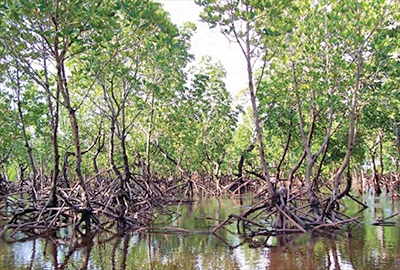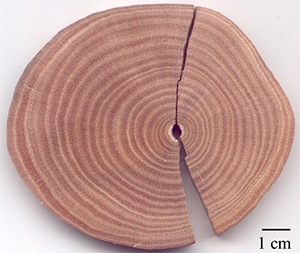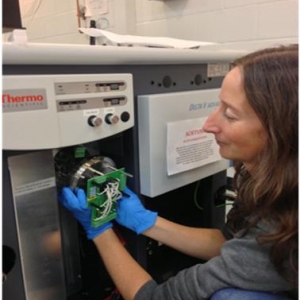There's a gap in our understanding of global climate history, dendrochronologically speaking.
“We have a research bias towards the temperate and arid regions,” Anouk Verheyden-Gillikin, associate adjunct professor of geology, said. “In order to have a more complete and more correct paleoclimate reconstruction, we need to obtain more data from tropical regions.”
A new methodology she’s is exploring could do just this.
Temperate trees are more often studied because they produce wide growth rings in favorable conditions (enough rain) and narrow rings in unfavorable conditions (drought), Verheyden-Gillikin said. Each ring has a distinct boundary, created when a tree stops growing for the year during winter months.
As such, ring width indicates what climate was like during the years of a tree’s life (which can be centuries long). Rings also indicate how much carbon a tree absorbs and stores in its wood as it photosynthesizes and grows.
Tropical trees, however, like those in the Kenyan mangroves Verheyden-Gillikin studies, often grow all year and produce continuous rings with few obvious boundaries.
Unless a scientist is using high resolution signals; the method utilizes several variables, including isotopes, to distinguish growth periods.
Analyzing different forms (isotopes) of oxygen and carbon, Verheyden-Gillikin has found that the isotopic composition of tropical trees changes with wet and dry seasons, due to differences in available water (made of hydrogen and oxygen).
“The isotopic signal provides a chemical ring boundary, rather than an anatomical boundary,” Verheyden-Gillikin said. “It allows us to obtain estimates of tree age, information on past rainfall and temperature, reconstruct tree growth rates, and determine carbon sequestration.”
Verheyden-Gillikin’s continued research is made possible by Union’s new isotope lab, supported by a National Science Foundation instrumentation grant secured by David Gillikin, assistant professor of geology.



